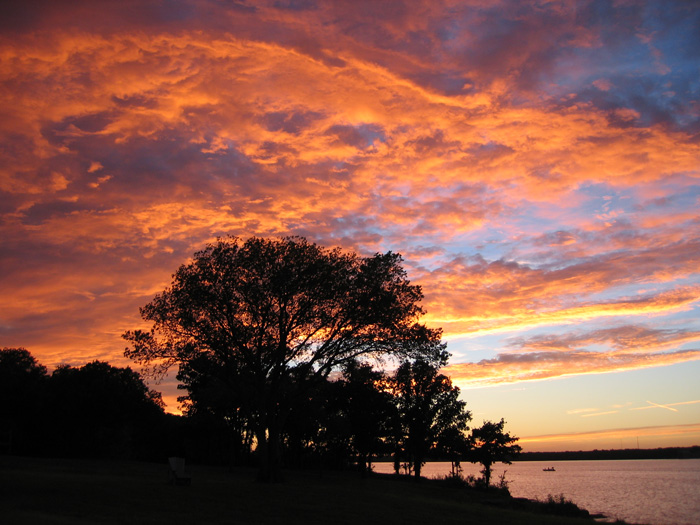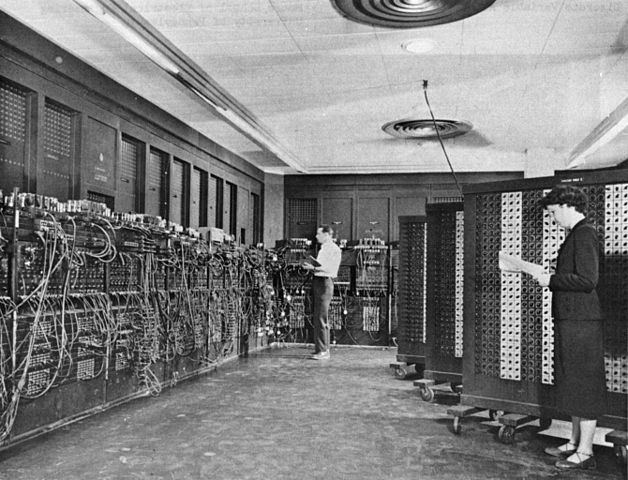Weather Forecasting Before Computers
Much of early meteorology was not a science. Weather forecasts often took the form of folk sayings that may or may not have been useful in forecasting the weather. Other forecasts were delivered by soothsayers, quacks, and astrologers, further damaging the reputation of those trying to understand how the atmosphere worked.
FACT BOX How accurate was folklore?
"Red sky at night, sailor's delight."
"Red sky at morning, sailor's warning."
There is truth behind this saying, but not at all places on Earth. A red sky is due to Rayleigh scattering of sunlight by the gases in the atmosphere. When the sun is low in the sky, all short-wavelength sunlight (the blue light) is scattered away, leaving the long-wavelength radiation (the red light).
In the midlatitudes, weather patterns generally move from west to east. If there are clear skies in the west, that means good weather is arriving. Thus, red sunsets mean good weather. However, in the morning, a red sky in the east means good weather is already past and more unsettled weather may follow.

(Source: David Schultz)
What serious weather forecasters there were at this time were using empirical rules of thumb, passed down from forecaster to forecaster. Weather maps containing the current state of the atmosphere from all over the region were not available, so understanding the current state of the atmosphere, let alone any future states, was not possible. The "gentlemen of science", including members of the Royal Society, denounced those who tried to forecast the weather. The state of weather forecasting at this time was stated quite bluntly by François Arago, who was the Director of the Paris Observatory and the Permanent Secretary of the French Academy of Sciences in 1846:
"Whatever may be the progress of sciences, NEVER will observers who are trust-worthy, and careful of their reputation, venture to foretell the state of the weather."
What meteorology needed was a firm theoretical foundation based on the laws of physics. In the same way that the path of a projectile can be predicted by knowing how gravity affects objects and knowing the initial angle and force, physicists argued that the same could be done for the atmosphere. What was needed was knowing the current state of the atmosphere and the laws of physics that governed its evolution.
Two individuals working independently both laid out the same plan: American Cleveland Abbe in his 1901 article in Monthly Weather Review "The Physical Basis of Long-Range Weather Forecasts" and Norwegian Vilhelm Bjerknes in his 1904 article in Meteorologischen Zeitschrift [Meteorological Journal] "Das Problem der Wettervorhersage, betrachtet von Standpunkt per Mechanik und Physik" ["The problem of weather forecasts, considered from the standpoint of mechanics and physics."]. Unfortunately, doing these calculations by hand was laborious, so no one even attempted making forecasts based on this method.
One man tried and succeeded...sort of. Lewis Fry Richardson attempted to perform the calculations for a forecast of the sea-level pressure over central Europe. He was using data that was collected over Europe during one day in 1910. In doing so, he developed methods for solving these equations representing the laws of physics. Richardson estimated that he took six weeks to perform the six-hour forecast. The forecast was a spectacular failure, but much was learned about how constructing and performing such a forecast could be done in practice.
Computers Arrive!
It wasn't until the advent of computers in the late 1940s that practical weather forecasting could be attempted seriously. Using the ENIAC computer at the Institute for Advanced Study in Princeton, Jule Charney, Ragnar Fjørtoft, and John von Neumann performed the first weather forecast by computer in 1949.
Since then, computers have become more powerful, techniques for computing the weather have advanced, and more sophisticated approaches to dealing with challenging physical processes (e.g., what goes on inside clouds) have been represented.
Thanks to these pioneers, many countries around the world now run their own weather forecast models every day. ManUniCast is one such beneficiary of their efforts.
FACT BOX What was the ENIAC computer?
ENIAC stands for Electronic Numerical Integrator and Computer. It was completed in 1945 and was initially produced to calculate missile trajectories over Europe and Africa. Following the end of the Second World War, the computer was developed to produce four weather forecasts from a series of initial data programmed in 1949. These weather forecasts were the first to be produced by a computer. The grid size used by ENIAC was much bigger than those used today. The machine used a plot of 19 x 16 points to cover the whole of the North American continent and most of the Arctic Circle! A forecast for 6 January 1949 was produced, with a north-east moving depression being the main point of interest. However, the forecast displacement was too slow, leading to a distorted depression shape over the course of the day.

(Source: "Eniac" by Unknown - U.S. Army Photo. Licensed under Public domain via Wikimedia Commons.)
These pages are written for ManUniCast by David Schultz, Fiona Lomas, and Katy Mulqueen, University of Manchester. Photos and graphics are credited individually.
